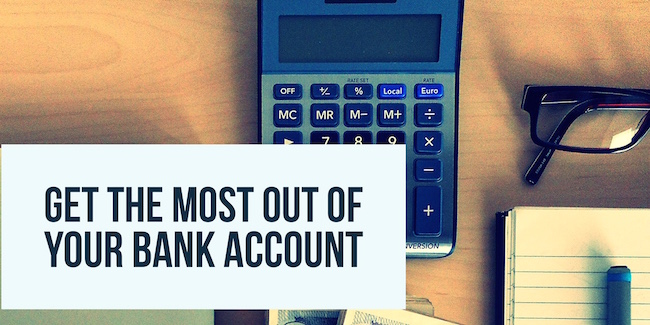Your bank account sits at the center of your personal finances. The core of your finances is your checking account, where your primary income and expenses flow through each month. If you want to get the best from your bank account, as a small business owner or just as a regular consumer, follow these simple strategies for excellent results.
Table of Contents
ToggleMonitor your accounts regularly.
Your bank accounts may have only a few transactions per month or dozens. Either way, you should keep up with your bank activity and check in regularly to look out for fraud or any surprises you didn’t see coming.
You can log into your bank directly, or use free tools like Mint or Personal Capital to check multiple accounts and get additional analysis in one place. As long as you are keeping tabs on your accounts, you don’t have to balance your checkbook. However, don’t skip out on looking in on your accounts. If you do, you could find yourself on the wrong side of a barrage of overdraft fees or worse.
Use features like bill pay and remote or direct deposit.
Your bank likely gives you free access to online bill payment, remote check deposits through your phone, and loads of other useful features. Some billers like utility and credit card companies even let you connect to your bank’s bill pay system for automatic payments each month.
The Federal Reserve reported that as of 2012, less than half of smartphone users were taking advantage of mobile banking. Online and mobile banking are game changers for how you manage your accounts. Take advantage of the many free features you have access to for the best banking experience.
Link to other accounts.
If you have all of your accounts at the same bank, you should be able to log into one dashboard to send transfers between accounts. The best banks also allow connections to accounts at other banks and investment institutions.
My bank accounts at my primary bank are connected to accounts at other banks, my credit cards, and all of my investment accounts. I can send and receive electronic transfers between all accounts at no cost. This makes managing multiple accounts a piece of cake.
Split your direct deposit for automated savings.
Most large employers give you the option to split your direct deposit into two or three different accounts each payday. You don’t have to get a lump payment into just one checking account, you can deposit into any type of account that can receive ACH payments.
Here are some good uses of a split direct deposit:
- Send a percentage of each paycheck into a savings account.
- Send $211 (every other week) or $229 (twice monthly) to a Roth IRA to maximize your contribution each year automatically.
- Try sending $50 per paycheck into a vacation fund to take yourself somewhere fun each year.
You can get a direct deposit form from your bank or brokerage to get the needed routing number and account number for a direct deposit into each account.
Take ownership of your accounts.
Your bank is not looking out for you, nor is anyone else in most situations. Take ownership of your account and become familiar with the features your account offers. Get to know where your money comes from and where your money goes. Treat your bank account just like a business treats its bank accounts. That means focus on minimizing costs and gaining long-term financial success.
















